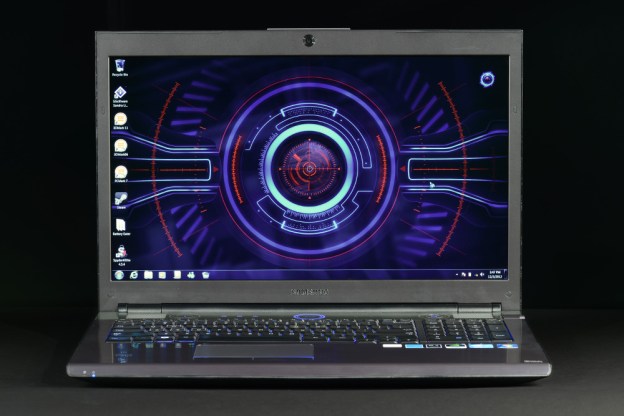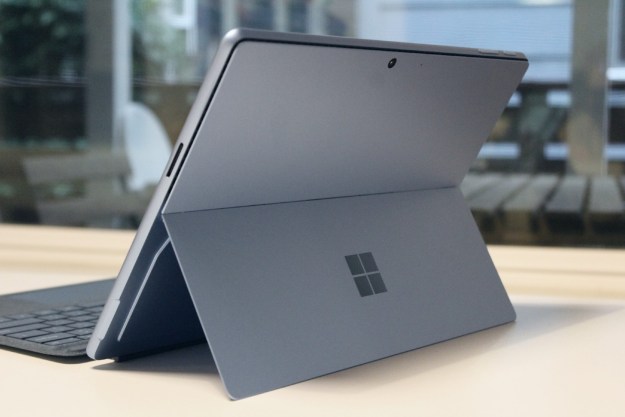
While mobile computing has seen a lot of change over the last five years, including the rise of tablets and the introduction of convertibles, there’s one category that has remained steadfast – the gaming laptop. These old-school hulks of processing power don’t give a damn about touchscreens and slim frames. It’s all about speed.
That might make the segment seem simple, yet gaming laptops present their own challenges. Hardware specifications are critical and, as a result, consumers looking to buy a gaming rig need to know more than average. However, as long as you’re able to grasp the basics, learning every detail is not required.
It’s all about the GPU
The importance of the graphics processor in a gaming laptop seems self-evident. Once shopping, however, consumers are sometimes distracted by the plethora of other extras bundled in gaming systems. RAM, network cards, extra hard drives, color LED keyboards – all of this vies for attention but must be ignored until after you judge the GPU.
We can’t hope to summarize the best hardware in this article because new products are often released. Instead, let us point you to the Notebook Check laptop GPU comparison chart. It’s a simple list that gathers benchmark data and uses it to rank graphics hardware. Any system claiming the title of gaming laptop should feature a GPU ranked as Class 1 on this list.
Any extra cash that can be spent on upgrades should first be spent on the GPU. No other part will offer better performance per dollar.
The processor is (kinda) important
Don’t let the focus on graphics suggest that the CPU does not matter. It does. Sometimes.
The value of the processor depends on the game being played. Some titles barely stress it and could make do with a Core i3. A select few, however, can bring even a Core i7 quad to its knees. Supreme Commander, for example, can still tax today’s hardware a full five years after its release.
Sticking with a Core i5 is not a bad choice if money is an issue. An i5 will not hold back by most games, and leftover cash will usually be better directed towards a GPU upgrade. A Core i7 quad is in every way preferable, however, so grab one if possible.
We don’t generally recommend spending money to get even faster versions of the Core i7 quad. The entry-level Core i7-3610QM is more than adequate. Upgraded versions are quicker but provide poor value. Money is better spent on other components.
Solid-state drives rule the world of storage
The rise of the solid-state drive has increased the importance of storage. It used to be a boring piece of equipment where bigger was always better. Now, with solid-state drives, performance matters.
A solid-state drive will drastically reduce load times for all games. Levels that normally take 20 or 30 seconds to load will instead take 10 seconds or less. Some games will also show less texture pop-in and stuttering as content is loaded more quickly. Gamers that have cash left over after upgrading the GPU and CPU should spend it here.
If one is good, two is better. A pair of SSDs running in RAID 0, a factory option on some high-end gaming laptops, can offer mind-blowing performance. Some games will load almost instantly, and even the slowest games will load in less than 10 seconds. This is a pricey upgrade, however, so only consider this if you’re flush with cash.
An SSD should usually be accompanied by a mechanical drive that can provide mass storage. With that said, not everyone needs the extra gigs and extra storage is always just an external hard drive away. Don’t let capacity fears keep you away from an SSD.
Do the graphics justice with a great display
Image quality is crucial for a gaming laptop. What’s the point of an amazing GPU if the graphics it cranks out are diluted by a terrible display?
Most systems ship with a resolution of 1600 x 900, or 1080p. Though 1080p is more recognizable, a 1600 x 900 display is fine for a 14-inch or 15.6-inch system. Only gamers looking at a large rig need to push for 1080p.
Don’t expect to find IPS panel technology. Though it’s normally an excellent choice, it’s considered undesirable in gaming laptops due to low pixel response times that can interfere with gaming. That doesn’t mean quality is poor, however. On the contrary, gaming laptops tend to score better than average in our display quality benchmark testing.
There’s no easy way to determine the quality of the monitor at a glance. Only testing can tease out the details. We judge the display of every laptop we review on the basis of color gamut, brightness, black levels, and screen uniformity. Though gaming laptops generally score better than average, our testing has shown that there are still significant differences between competitors.
Trust tests, not your eyes. Displays rarely look the same at home as they do under showroom lights. Read reviews, note test results, and let these guide your decision.
Portability is a relative term
Manufacturers in the gaming market will occasionally talk about how one of their smaller systems offers mobile gaming power. Alienware’s M14x uses that exact tagline to promote itself as a truly portable gaming PC.
In truth, however, no gaming system is portable by any normal measurement. A small entry like the M14x can, in certain configurations, match the weight and battery life of a standard 15.6-inch laptop – and that’s about as portable as gaming laptops get. Even 11.6-inch alternatives available from boutiques like Origin are beefier than their display size suggests.
We’re not saying that size is irrelevant. While every gaming laptop is chunky, the largest models are absurdly huge. Alienware’s M18x weighs about 10 pounds, as does Origin’s EON17-SLX and the ASUS G75. Even 15.6-inch models usually weigh between 7 to 9 pounds. Gamers who travel frequently should shy away from these behemoths and stick with a 14-inch model.
Getting your priorities straight
We’ve now touched on all the important points. There’s a lot of information to remember, so here’s a summary of priorities in order of importance.
It’s all about the GPU! – Graphics always, absolutely, without question is priority number one. If you have any extra money for upgrades, spend it first on graphics. The GPU should be the first component compared when looking at two different laptops.
Go Core i5 on a budget, Core i7 if not – Self-explanatory, really. A Core i7 quad is the preferable processor for a gaming laptop, but sticking with a Core i5 is fine if budget matters.
Solid-state drives rock – Look for a gaming laptop that offers inexpensive SSD upgrades. Choose a capacity of at least 256GB if the SSD will be the laptop’s only hard drive. Lower capacities are acceptable if it includes a mechanical drive.
Check the display – Read quality reviews to see how a laptop’s display checks out before buying it. Give preference to low black levels, a wide color gamut, and high brightness. Avoid laptops that only offer 720p resolution.
Buy the right size! – Bigger isn’t always better. Massive rigs are both thick and heavy, making them terrible for travel. Pay close attention to a system’s weight and thickness before buying.
That’s the core of what any consumer needs to know. Other factors, like RAM and connectivity, can also be important – but these are less likely to be a concern because gaming laptops are ridiculously well equipped by default. Don’t worry about the details until you’ve found a laptop that fulfills the basics.
Editors' Recommendations
- No, you shouldn’t just buy whatever Brother printer is cheapest
- The best laptop brands for 2024
- How to choose the best RAM for your PC in 2024
- Hurry! The Razer Blade 17 gaming laptop is 44% off today
- How to check your laptop battery health


